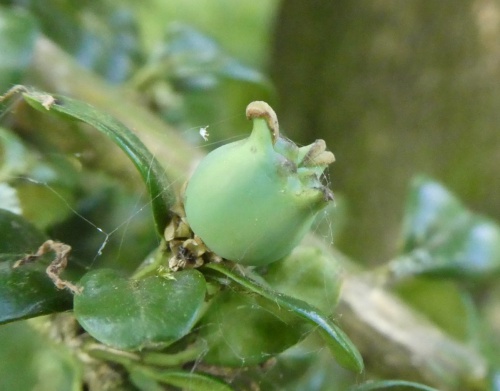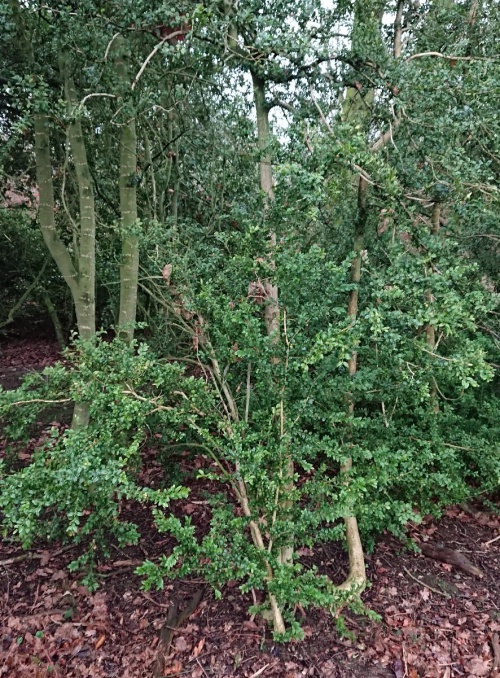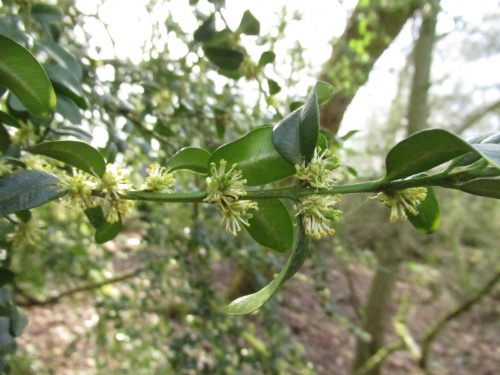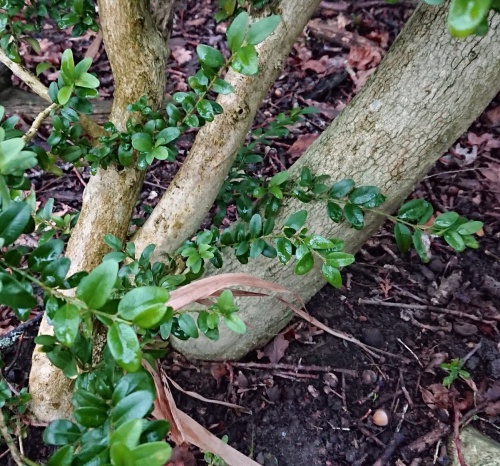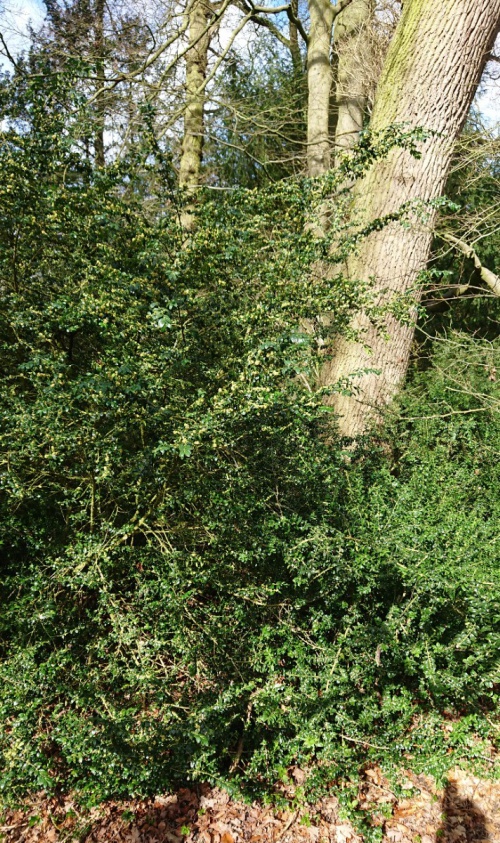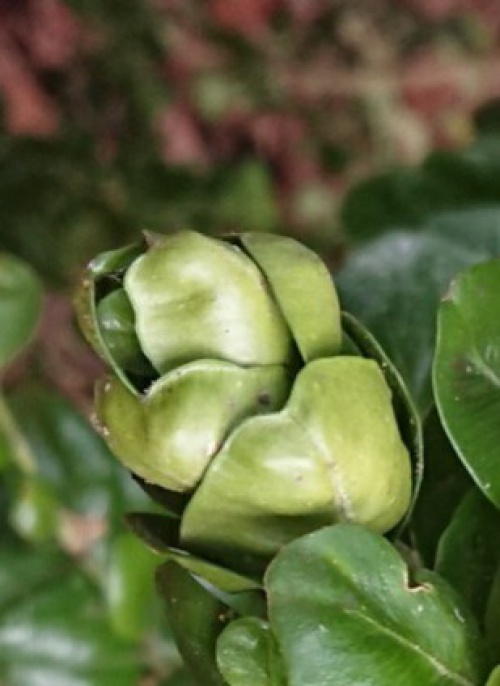Box - Buxus sempervirens
Evergreen shrub or small tree. Leaves opposite, oval to elliptical. Flowers greenish yellow, tiny (2 mm) in lateral clusters with male and female borne on the same plant. Fruit small three horned capsule containing black seeds.
Very similar to Wilson's Honeysuckle and Box-leaved Honeysuckle, but quite different when in flower and fruit.
Woodland, large bushes surviving as a result of deliberate planting for landscape or amenity reasons, or for pheasant cover. Common as a trimmed ornamental bush or low hedge (often non-flowering) cultivar in parks, gardens, churchyards and cemeteries.
Flowers April and May.
Evergreen.
Widely planted throughout Britain but rarely naturalised; native only in a small area in S England.
Occasional as a planted bush in woodland and parkland in Leicestershire and Rutland. In the 1979 Flora survey of Leicestershire it was found in 44 of the 617 tetrads.
Leicestershire & Rutland Map
Enter a town or village to see local records
MAP KEY:
Yellow squares = NBN records (all known data)
Coloured circles = NatureSpot records: 2020+ | 2015-2019 | pre-2015
UK Map
Species profile
- Common names
- Box
- Species group:
- Trees, Shrubs & Climbers
- Kingdom:
- Plantae
- Order:
- Buxales
- Family:
- Buxaceae
- Records on NatureSpot:
- 11
- First record:
- 13/08/2016 (Nicholls, David)
- Last record:
- 20/02/2024 (Carter, Robert)
Total records by month
% of records within its species group
10km squares with records
The latest images and records displayed below include those awaiting verification checks so we cannot guarantee that every identification is correct. Once accepted, the record displays a green tick.
In the Latest Records section, click on the header to sort A-Z, and again to sort Z-A. Use the header boxes to filter the list.
Latest images
Latest records
Box Sucker
The psyllid causes galls to form on the shoot tips of Box. These galls take the form of pale, cabbage like clusters, the bunched leaves being strongly concave and slightly thickened. During the summer they conceal numerous tiny pale green nymphs covered with white wax.




